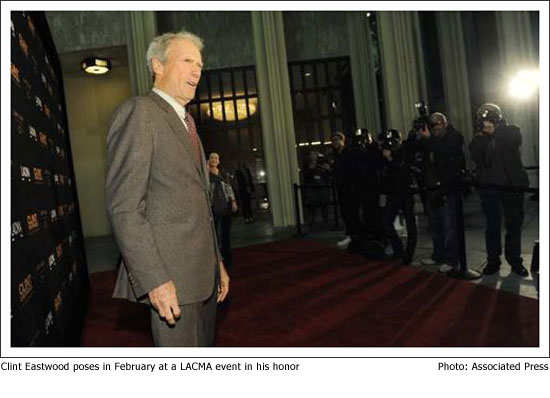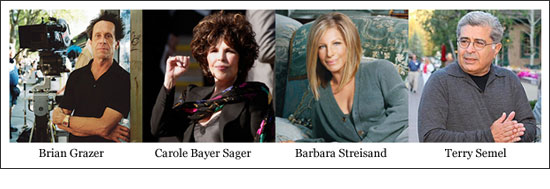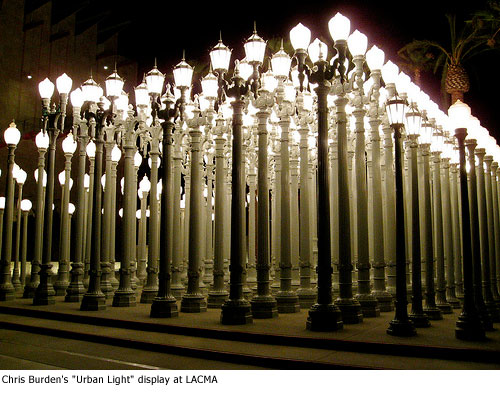LACMA goes Hollywood
May 13, 2010
In February, the Los Angeles County Museum of Art hosted a rare appearance by Clint Eastwood.
The packed, invitation-only event—featuring a screening of an Eastwood documentary, followed by a question-and-answer session with the actor/director—was a coup for the museum.
But LACMA Director Michael Govan claims no credit for the Eastwood “get.”
“There’s no way in the world I could have gotten Clint Eastwood to come on my own,” says Govan. Instead, he’s quick to give top billing to the museum’s board—specifically, co-chair Terry Semel. The former Warner Bros. chief has enjoyed a two-decade friendship with Eastwood, releasing 20 of the actor’s films at the studio.
Beyond the evening’s glitz, the Eastwood event was a stunning illustration of a new L.A. story unfolding at LACMA. The county’s premier art museum is tapping the town’s most famous hometown industry by increasingly casting Hollywood luminaries for its board of trustees.
Given its home in the entertainment capital, Semel says, LACMA embraces film as a “serious art, a real art,” one that, along with photography, should play an increasingly important role in the museum’s identity. That, he says, “is critical.”
The hope, of course, is also that the tighter ties between LACMA and the entertainment industry will lead not only to a new burst of creative energy but also to a new pool of donors beyond the traditional worlds of real estate and finance. LACMA board members each commit to raising or giving $100,000 per year.
Besides Semel, who also formerly headed Yahoo!, the 59-member board of trustees includes singer Barbra Streisand, producers Brian Grazer and Steve Tisch, Sony Pictures
Chairman Michael Lynton and songwriter Carole Bayer Sager, as well as other top-drawer execs in the worlds of media, sports marketing and video games.
“You put a few major entertainment figures on the board and your Rolodex is just so rich,” says Bayer Sager of the benefits to LACMA. “It’s useful in getting dynamic people who care about the arts.”
Bayer Sager, who joined the board last November and is married to Semel’s former Warner Bros. partner, Bob Daly, says she recently began developing a series of possible public service spots aimed at boosting LACMA attendance, especially among the hard-to-reach younger crowd.
Still in the design phase, she says the first installment—“Have You Seen the Lights at LACMA?”—would feature the iconic “Urban Lights” streetlamp installation along Wilshire Boulevard.
Although the marriage of Hollywood and LACMA seems like a natural fit, the county’s museum hierarchy failed for years to reach out to the entertainment community.
“My New York friends were wondering how come we had so few people on the board from Hollywood and the entertainment industry,” recalls Govan, who took over in 2006.
Although efforts had begun before his arrival to build a better roster of industry powerhouses, Govan says he too wondered why more weren’t being enlisted. He said he was determined to bring more diversity and youth to the board.
In years past, LACMA’s relationship with Hollywood seemed not to be particularly strategic. Suspense actor Vincent Price, a collector, was a trustee in the early 1960s before
LACMA moved to its present campus. Steve Martin joined the board in the late 1980s. That may be why the comedian and art collector, who continues to support the museum, was able to roller skate through LACMA galleries and past a pair of David Hockney paintings in the 1991 film “L.A. Story.”
The new infusion of Hollywood players may prove especially useful as LACMA tries to heal wounds that developed last year when Govan announced that the museum was planning to end its screenings of foreign and domestic films, after a 40-year run for the program. Audiences and revenues were dwindling, he said.
The ensuing outcry—including an open letter from director Martin Scorsese—put Govan on the defensive. The Hollywood Foreign Press Association and Time Warner Cable stepped up to sponsor this year’s film series.
Govan has said that the museum would like to raise at least $5 million to make the program sustainable long-term, and Semel has vowed to do his best to make that happen. Last fall, producer Irwin Winkler hosted what Govan calls a “friend-raising”—rather than fundraising—event at which the museum director sought ideas about how to improve the film program from industry veterans.
And then there’s Semel’s pal, Eastwood. On the night of LACMA’s event in his honor, Eastwood vowed that he’d “reach into [his] pocket, too.” And that’s the kind of role modeling LACMA undoubtedly is happy to see.
Posted 5-13-10

















 405 bridge work causes a stink
405 bridge work causes a stink